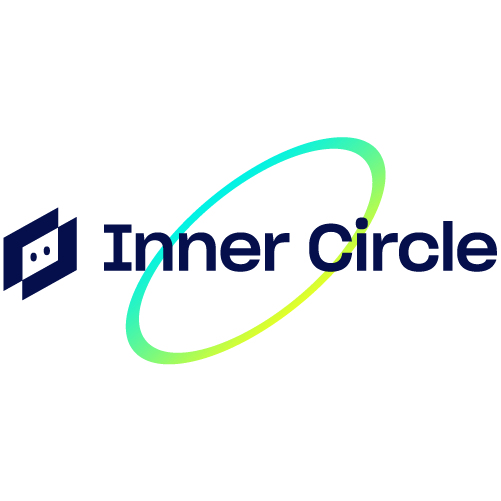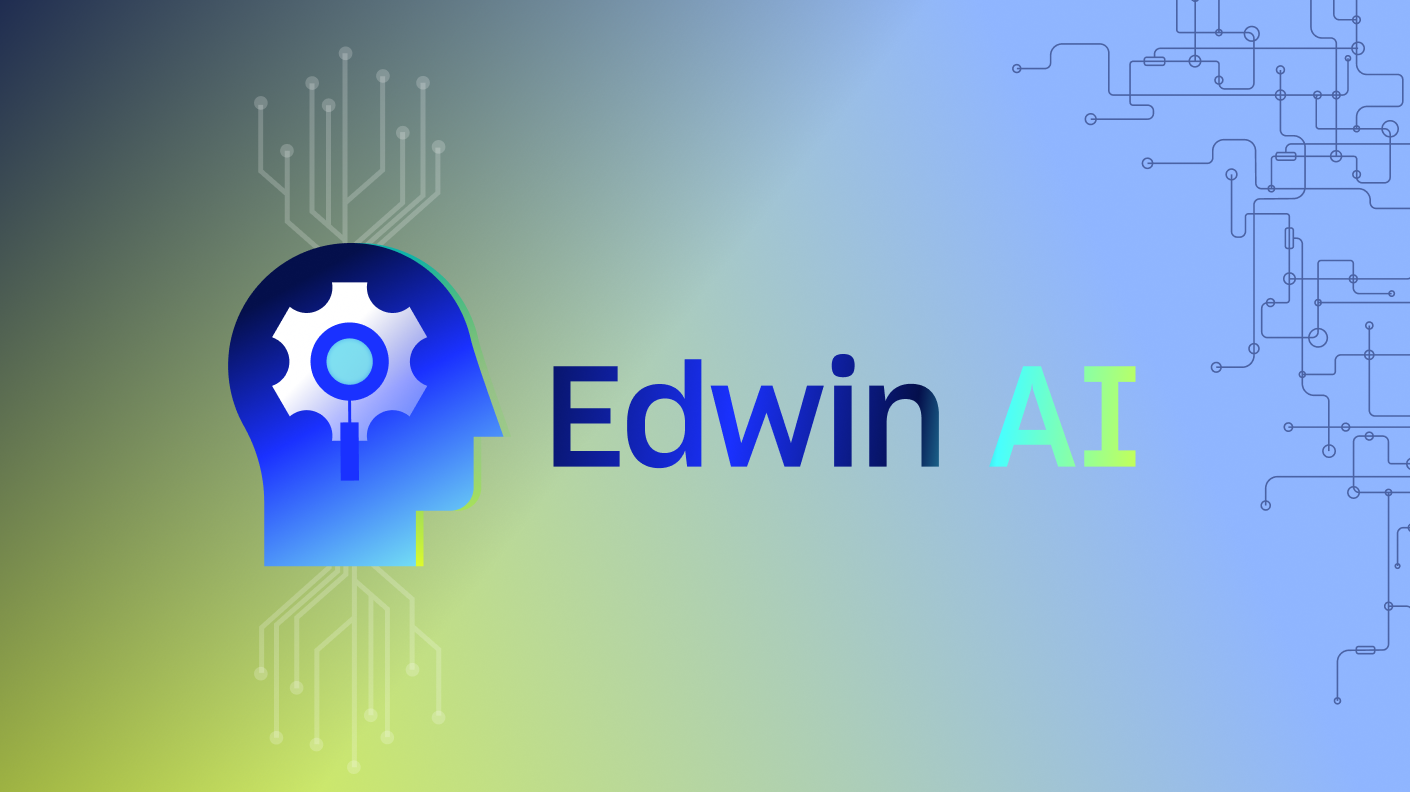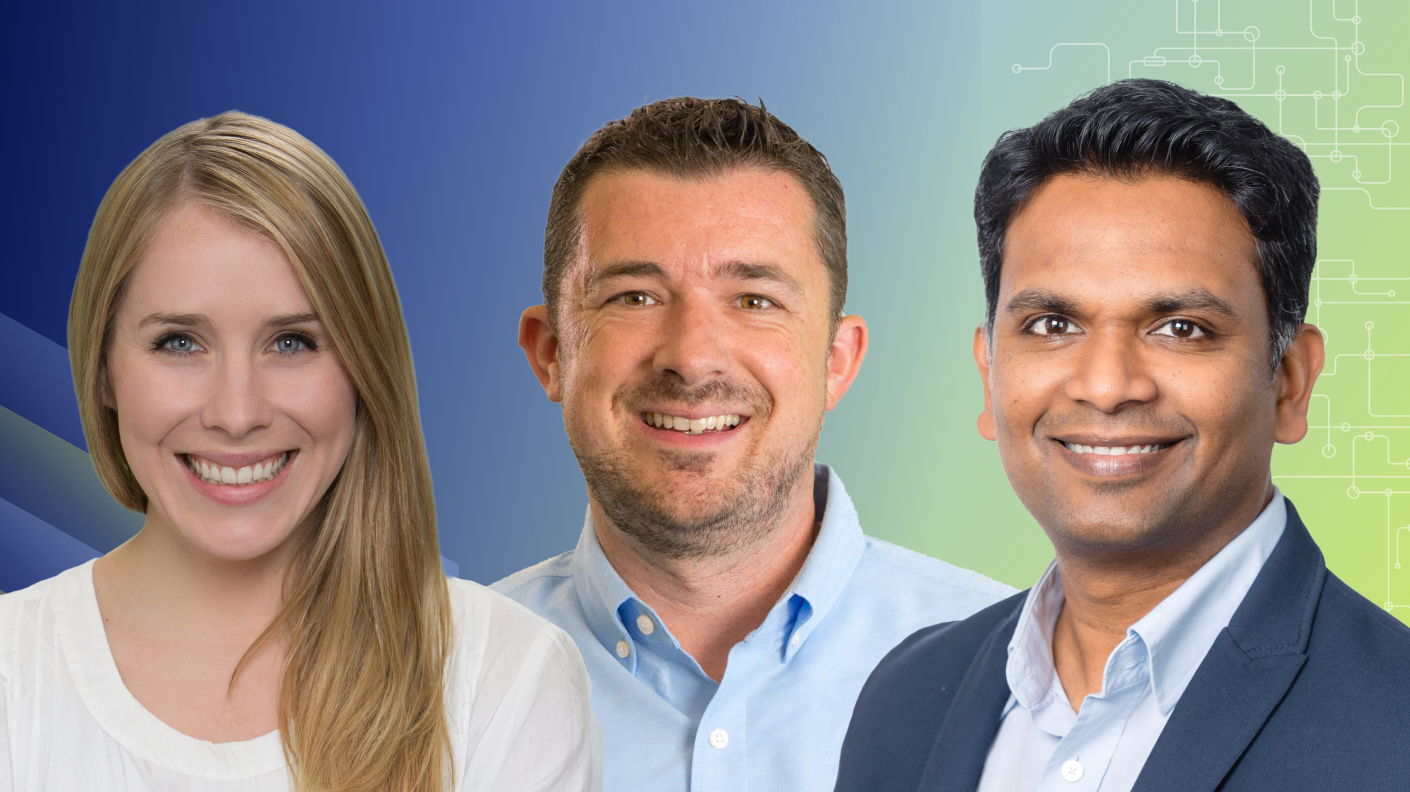“I am thrilled to be here. Again, I am Andrea Curry.
I’m so excited for everyone in the room. We have a lot of thinkers in the room. We have a lot of intelligence in this room. So I’m gonna take this opportunity to ask a question.
So, feel free to blurt it out. I know we have engineering, marketing, does not matter what your field is.
I need some feedback. So, the question I have is, what kind of computer sings the best?
Adele.
So, I had to break up some of the series, but thank you all.
So, I’m I’m glad everyone laughed at it. If not, I was still gonna laugh.
I’ll start with my story very briefly. So, before I was director of observability and scheduling, my title was director of tools, of systems and tools.
So, I was very excited to get the position and I was like, I’m director of tools.
Next question I get is, well, what does that mean? What do you do? What kind of tools? You know, so, I’d go into my loan spiel and things of that nature, and a few months after I walked into the role, actually about nine months, there was a shift in all of the in all of the positions and the titling and how we were going to approach it as an org, so they came to me and said, Hi Andrew, we want you to switch and move over into observability and I was thrilled, because I’ve said it pretty much everywhere that I can say it that I do not like monitoring.
And everybody said, what do you mean? What do you mean? I started in a knock, came from monitoring. Monitoring would only tell me when something was down.
Monitoring would only tell me after I was in trouble, and I need something that had insight. So, I love the thought of observability.
Going into coming from tools though, I did keep that in mind. So, with tooling, you must have the right tool for the job. So, I definitely always keep my tooling aspect in. So, I’ll tell you a brief interaction I had, again I was just Director of Tools and I’m excited, I’m thrilled. So, I get a call from someone, senior leadership, and they say, So, Andrea, we’re aware that you’re over tools now. I say, Yes, I have twenty eight tools.
Twenty eight tools? I said, I got twenty eight tools.
Why do you have so many tools?
And, you could hear me blinking.
Because I was happy. I managed twenty eight tools.
And they said, we need you to consolidate. We need you to rationalize on the toolset. Why does everyone have a different tool for a different reason? And then we’re only using the tools for about ten to fifteen percent of what they utilize. So, every tool we used one module, two modules, three modules, if we were dreaming if we used three or if we even got to twenty percent of any one tool, we were doing good. So, started on the tools rationalization journey, about that time our senior, leadership was running a RFP. So, it was a request for a proposal.
And, that request for a proposal, had eight different tool tooling vendors.
It was very rigorous, went on for months and months, and LogicMonitor won. So, it was very, very, thought out process. While I did not run the RFP, I I continue to reap the benefits of the choice of LogicMonitor.
So, I’ll fast forward to now, about a year and a half, almost two years from that point, we are now down to, I wanna say eleven tools. Amit Amit will have to keep me straight, he’s my lead. I’ll say something and then he’ll whisper the real number, but I think we’re down to about eleven or so tooling.
So that has been a great, great achievement for me. So, I’ll go back to my slide.
I run four different teams across five business units. So, I run the Enterprise Observability for McKesson, the ICC team, which is our Integrated Command Center, our twenty four by seven NOC, the tooling team, observability team, as well as two workload scheduling teams, so my teams depend very heavily on observability.
We began our journey with LogicMonitor with, one deployment of three thousand eight hundred devices and this is major for us. I mean, we’re talking about we’re normally throwing one agent on a server, having to change control, and having to go through cab for that, and it takes two, three weeks to get one server.
One agent on one server. And so we talked to our, engineer architect Adam Sims, he’s awesome by the way, from LogicMonitor, and, he said, I can do this, I can do this. We we just got to put it in this automation worksheet, And I said, so we just have to put it on the worksheet. You gonna handle the rest.
He’s like, I got you. I got you. So the day before he can tell you, I kept calling, are you sure? Do we want to do a practice run?
Do we want to put it in test somewhere? He said, I got you. I do this all the time. So next day came on, I said, hey, Adam, how’s it going?
Are we ready to push? He comes back, he says, It’s already done. We log into the portal, all the devices are there. So, that speaks to the easy onboarding.
Say no more, I was absolutely in love with LogicMonitor, since that point. So, anytime LogicMonitor calls and asks me to do anything, I’m very thrilled because again, it helps me be successful in what I do, and I cannot tell my story without telling LogicMonitor, as part of my journey.
So, let me take you along the numbers on this journey. So, altogether we’ve migrated over or we’ve added over thirty thousand on prem devices, and including our vCenter and things of that nature. We have over fifty thousand cloud, entities and everybody knows you have all of your peripherals when you add cloud, but this is massive because where we were coming from when I first took over tooling, I believe we had thirteen thousand somewhere in that area. So to go to the numbers that we have today, it’s just amazing. So I remember my, leader, awesome awesome leaders at McKesson, I will say that.
My leader said, we were setting goals. I said, I’m gonna add, we can do thirty thousand devices.
And, he said, Andrea, I know you knew, I know you are excited and I believe in you, but I thought, I might just want to dial it back just a little bit. And I said, no, no, we can do it. I know we can do it. And he was like, okay, if you say we can do this, I’m gonna take your word. Plus, it’s gonna be your performance right now on the line.
So so, long story short, we did make that thirty thousand thirty thousand device mark, and it was a huge huge celebration for us, and we’re still going along the journey. I believe we find Thank you.
Thank you. Thank you. I believe we find, a new use case or a new reason to use Logic Monitor, a new area that we can use it in, probably monthly. I know I’m always calling like, hey, the team thought of this, hey, the team wants to know this, and, and there’s not been one, not and I do mean not one instance that we’ve brought to them that they haven’t just dug in and dived in on and responded to. So, the team is is really, really awesome and our experience with them has been awesome.
So, RCAs, we do root cause analysis. Anybody else in here get called to root cause analysis? Everybody knows you you must be in a MIM, in a p one or p two situation, in order to get it get called into those calls. So, when I first took over the role, again, it was tooling director, Every single call I had to be on there. I say every single Andrea, why don’t we have this in monitoring?
Write it down, we’ll get on it. Write it down, we’ll get on it. So the last RCA call I was on was probably, I know over a month ago, but it was literally over seven months before I had to come into a call. And that wasn’t my fault, it was someone who didn’t give us a correct list of their devices, but we literally have ramped up a lot of, a lot of our our calls.
And that just that saved me time, it saves it saves my team, time. So and I’m talking about hours and I know it doesn’t seem like it adds up quick, but it really does. When you get that back in your day and you can put it toward the high level project that the team really that the organization really, you know, is bringing you in to pay you for. So, and then I want to say we modernize the enterprise, to drive a new standard for observability.
At first, again, I was telling the same story after, I got on. What is observability? What is observability? What is observability?
And I’d repeat it and repeat it and repeat it so much and then we get to the point where the next thing I know they say, Hey, you’re observability aren’t you? I’m like, You know what observability is. So, the story has evolved and it’s a great story.
Okay, so I want to briefly walk us through three, sorry I’m doing a time check, I want to walk us through three different uses that we have totally leveraged logic monitor for and it’s not for your basic, basic, I’m not gonna say basic monitor, but it’s not for what you routinely think of. So, for compliance, it is absolutely come to our rescue to help us remain one hundred percent in compliance. Anyone who’s had SOC or SOCs can understand that, when you’re dealing with financial systems, you’re dealing with just auditors. The first thing that they’re gonna ask is, show us any alerts or show us any issues with this.
Okay. Show us what time it came in. Okay. You think check check that box. Okay.
The next one, show us where the ticket was created. Show us where you responded to it. Show us where a manager approved on a change control. Show us this.
Show us that. Show us this. And we can absolutely come to the table and show it. So we have, about five hundred and ninety and it may be a little higher than that, payers and pharmacies, from one of our other business units that we acquired and, they came to us and said, hey, we we need help.
And, I said, hey, we can get this done.
The four days, this was on, I believe it was like March twenty six, twenty seven. We needed about the thirty first. You mean of this fiscal year, not next fiscal year. So we did and again, I did the same thing, I called Alec.
I said, hey Alec, I need you. Next thing I know he’s on a call. So the team is absolutely amazing. I I I do want to continue to speak to that because I don’t feel that LogicMonitor is just a vendor for us.
They are truly partners.
My pain is their pain and you know, pain loves company or something like that, maybe misery, but so they they absolutely show up and, and answer the call every single time.
Okay. The next, situation was for our SAP migration. So, So, if anyone has SAP in here, you may be familiar with this story. We’re on prem, migrating up to the Cloud, and everyone was so nervous.
It’s our SAP system, oh, I don’t know, I don’t know, I don’t know. So, So, we were on a call with LogicMonitor, so we have to figure out how to migrate. Is there any way that we could see this? And they said, yeah, we can see it.
And I said, great. So we were able to monitor our, application gateways, our pipelines, Kamani, who is our network engineer was able to get on and help with the networking side of the migration and we could tell leadership at any single time, we’re good. We’re still green. Hold on, we’re filling up a little bit more.
Let’s dial it back or you know, hey, we’re getting into rough territory here. So, that’s a way that I had never thought to leverage LogicMonitor, but it was absolutely a success and the next migration leadership is like, hey think we can put that in LogicMonitor? So, that’s literally the feedback that we get.
And the last one was our ServiceNow, collaborations.
So, we have thirty six applications that were considered P one and we moved them into, our app to Infra. This may not sound huge, but considering the, sheer volumes of the applications, most of our P ones fall in the category of, either making or costing the company up to a million dollars per minute in some instances when it’s down. So, these are huge applications and we were able to collaborate with the ServiceNow team to get that into play.
So, I think now it’s time for me to invite Julie, well, hold on, I got one more slide. What’s next for us? Edwin AI. We are absolutely moving in to the future and moving into the now, I shouldn’t even say the future with Edwin AI. So I am super excited and the next time any of you see me, I want you to remind me, I’ll see you through industry or probably through another, event, it doesn’t matter or through life.
One word because I take AI so seriously. I’ve literally went to get, I’ve gone to get, certified in it.
And I want you to say this word back to me.
Sorry, I’m getting emotional.
Supercalifragilistice ispialidocious.
So, Julie, if you’ll come back and join us.
Round of applause for Andrea.
Thank you. Take a breath, take a bow.
The hard part’s done. Now we get to have a little fun Q and A.
Yes, yes, yes.
And I do wanna talk about Edwin, and I wanna talk about all that. But I think I wanna double click on some of the parts of the story that you just flew by because, like, well, we’re just gonna do it, and it’s just gonna happen.
But there’s a lot of, you know, maybe Jedi mind tricks, maybe sweat equity, maybe, you know Yeah.
That that, you know, selling and winning and convincing, but I think that may be something that people wanna understand more about. So if we just start with, you know, just, like, think about McKesson. Right? Mhmm.
McKesson plays such a critical role in the US health care. You know, they provide a third of pharmaceuticals, right, that are lifesaving, you know, every single day. And, you know, we heard from Christina this morning around, you know, the IT heroes, right, and the action figures. And, you know, know, you are one of those heroes.
And and I I loved yours, by the way.
It’s been great.
And you and your team are making all that possible from behind the scenes.
So, I think maybe just let’s just start, Andrea, with, like, walk us through how, LogicMonitor is helping your team keep everything running at such a massive scale.
I think the biggest, attributed to that is, it allows us to standardize. So, we’re able to folderize and place things and items in LogicMonitor, so when we onboard it, we give it the same attributes or the same data sources, so we’re not constantly reinventing the wheel. So, that’s the biggest piece that helps us move so fluidly and, I don’t know what the word is for better than agile, but it helps us do that.
That’s that’s one of our, you know, better every day and and being agile are our core values as well. Let me just ask if you don’t mind, you know, this this incredible scale, you know, it, is there someone on your team or even someone in your personal life that is your, you know, IT hero that you’re looking up at too and keeping you keeping you going, keeping you motivated?
There are several, and I’m gonna get in trouble for naming names, but I’m gonna I’m gonna try anyway.
I like to stay in trouble, so I’ll go for this, and he may be in the room. Where’s Amit Bandel? Are you in here? Amit is my, observability lead and he absolutely keeps me going.
The moment that I’m like, I’m tired, I think about how much he absolutely pulls into the space, and, we were taking pictures earlier and, he grabbed the one card that said, I’m, observability, I think hero or something. Oh, observability is my superpower, And that’s what he said. And it really is. So I just and and and like I said, I hate to just single out and name names, but he goes above and beyond and they’re part of our, partnership, with TCS, our managed service provider.
And so, I love I love to tell the story of how fluidly that works and, and and it integrates with us. So, he’s definitely won. My leadership, as I said before, at McKesson, the leaders are awesome. They really put in two, they invest in the leaders, they invest in the leaders who lead leaders, so that would be the biggest thing.
Because I my boss absolutely believed in me, and he had my back, so I appreciated that because he could have said, you’re dreaming. Knock it down to ten thousand devices. But he was like, you know what? If you if you tell me you can do this, I’m gonna rock with you all the way.
So definitely leadership having our back.
Yeah. Let’s let’s talk about those. Not ten thousand, thirty thousand devices in in under a year.
I mean, I didn’t unfortunately, I didn’t get to see all the eyes, but, like, what?
Turn to your neighbor and make it incredible.
Achievement.
You know, so I think that’s where people wanna know what the secret sauce is, the best practice, the, you know, you know, were there key decisions or strategies that that made that happen?
Yes. And I’m gonna go technical on you for a moment.
When Adam tells you, you absolutely need to put this in a structure in folders, don’t tell them you can do it later and you’ll figure it out later because you will end up going back to redo it. So the, LogicMonitor has an awesome, template. So they gave us this template, and they went, hey, fill it out. And again, it was just, it was honestly as simple as that.
It was fill out this template. So we filled out the template and that’s all I can say is just trust the experts to do what the experts do, and, and reach out if you have questions. I I think sometimes in IT, we all kinda stumble through trying to figure things out, and I think we may spend a little too much time trying to figure things out. So that that would be my piece of advice is just listen to the experts, Sajid Mahner.
We’re we’re here. We’re here for you. And we, again, we wanna understand what that journey looks like, what that goalpost is. That way, we can have the right the right speed and support, when you need it.
Another amazing statistic you got I know you you flew by in the in the in the slide with all the amazing statistics was around going from the thirty nine percent visibility to, you know, near full visibility and then the ninety five percent reduction in RCA tickets.
Yes.
You you you and I heard of the applause on that one as well in the backstage.
You know, how are those connected, and then how has that, you know, drove impact to your business?
So they’re connected because the more devices that we put into monitoring, the fewer monitoring misses that we’ll have. Again, the we went we go we go through a series of questions when we have an incident, and it’s was there a monitor, and how were you alerted? Were you alerted through a device, or through a tool, or through automation, or was it a manual, notification? So that that’s one of the questions that I have to answer to every time there’s an incident. So, is is it correlation causation? So, as the monitoring goes up, then the misses go down.
And then, how does that relate back to the business? How do you how do you speak that back, not technical, but back into business speak?
I think the best way that we really don’t start off with in business is through reputation, because when we’re down, we have a outage, we have someone at a pharmacy that cannot fill a prescription because we we missed the mark somewhere. I mean, it it it speaks volumes, and so for me, it’s it’s affecting everyday lives, so I think that that’s a big piece to it.
Is the reputation is a big piece.
The hours, of course, money’s always a big piece as well, so the more hours that you can save and use that leveraging, actually making money instead of trying to prevent stop the bleeding, so to speak, then the better off your company will be.
Yeah. Absolutely. If you if you tie back to the business, like, what happens when? Yes. Right? Absolutely. And it’s a it’s a it’s revenue, it’s it’s a customer experience, or perhaps it’s a a life that could be impacted.
So as someone who ups, oversees, you know, five across five business units, what does a unified approach mean to you and your team? I know you mentioned the the templates. Yes.
Yes. So a unified approach for me means standardization.
It means we can finally get to one single pane of glass. There’s nothing more irritating to me than every time you do something, you do it different. There’s always a million one offs and you can’t just standardize.
So, for me, this allows me to standardize across, not just for my team, again, this is five business units across all of enterprise McKesson.
So, it is really good and it allows me to just hold that standard, to keep the standard without having to always revert and go back and start over, or find a new metric. So that’s the biggest part.
So it sounds like you you can kinda weather any storm. So the dynamics can change, the team can change. Right?
The the challenge they’re gonna throw in front of you or you’re gonna take Yeah.
And make, but you you already you guys already have your plan, and so it’s just a matter of, you know, rinse and repeat with a lot of hard work.
Absolutely. So one of the things I I say, and I say it to my team all the time is, I wanna set my goal is to set a road map, so stable that no anyone can pick up the the road map and run with it. Too many times I see in in our industry, especially, if a certain person leaves or someone who’s championing a certain aspect leaves, then whatever they’re pushing dies and goes away and then it just kind of falls by the wayside. So that’s one of the best stories that I can tell, is that a story that would tell itself long after I’ve come through McKesson and gone.
And, you’ve already established such an amazing legacy, but now I’m going to talk about the future because that’s what I know we’re all excited about.
So you’ve already modernized McKesson’s observability, and you’ve got this incredible new industry standard and and this road map and this team.
So what’s what’s next on the road map, and and where do you see the biggest opportunity for your continued innovation?
Edwin, AIOps is absolutely on our roadmap next. As I mentioned, we went from low percentages to almost all of our, scope, and I will say ninety nine percent of everything that we scoped in is now in monitoring and observability, and what does that do is it also increases your amount of alerts and your amount of tickets. So, I’m telling the world, like, I told you this is gonna happen, just wait for it, wait for it, wait for it, we’re gonna implement it when I expect to see out of the box results, and I look forward to coming and telling the results. Yes.
Absolutely.
Well, we will take that that challenge. We will support you on that journey. And so, again, Andrea, thank you so much for being here today and for being our customer hero. Another round of applause for Andrea. Thank you.”








